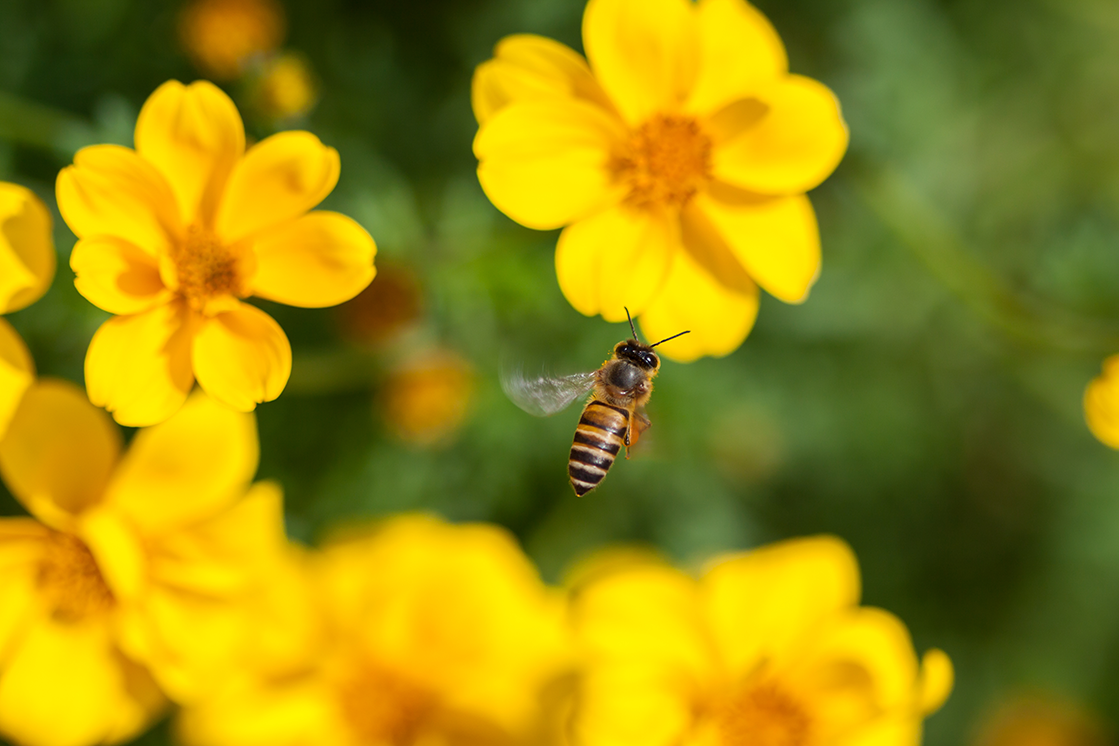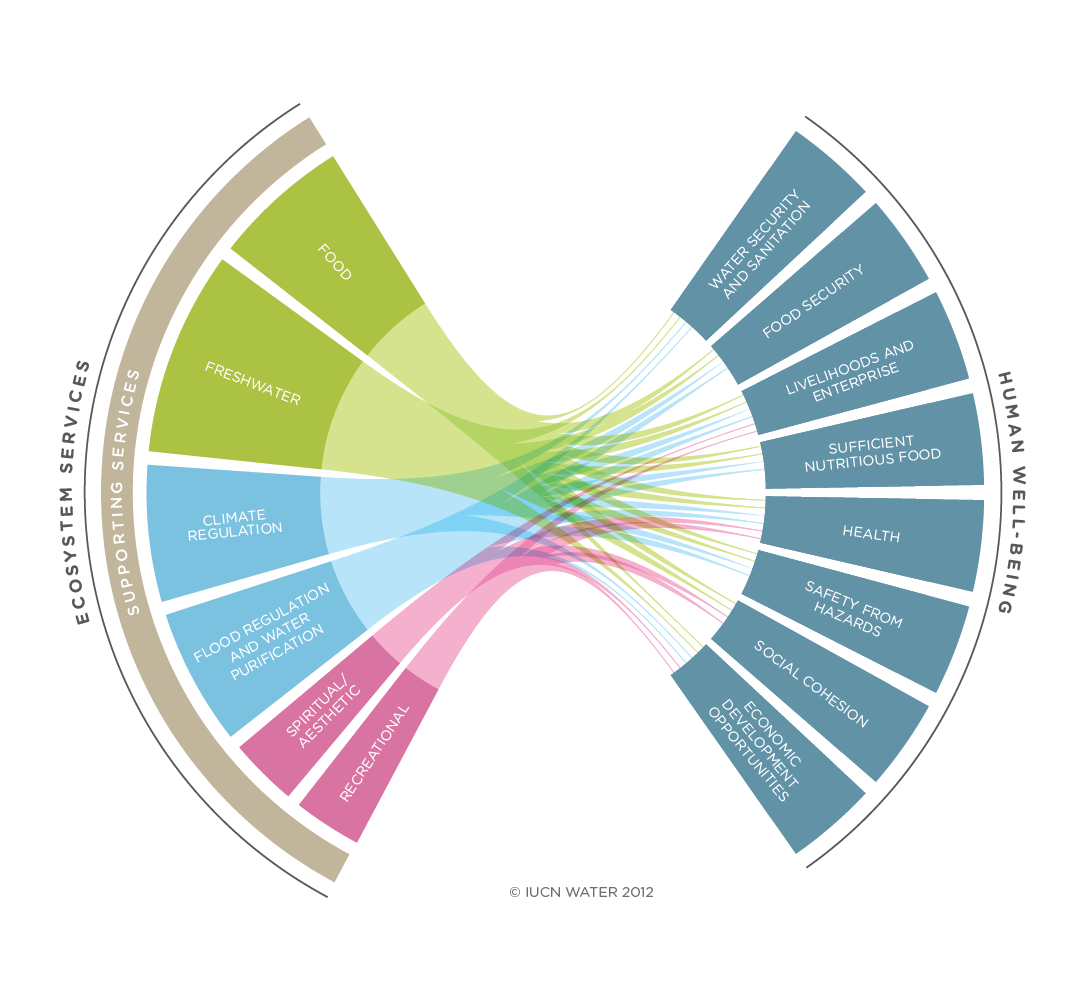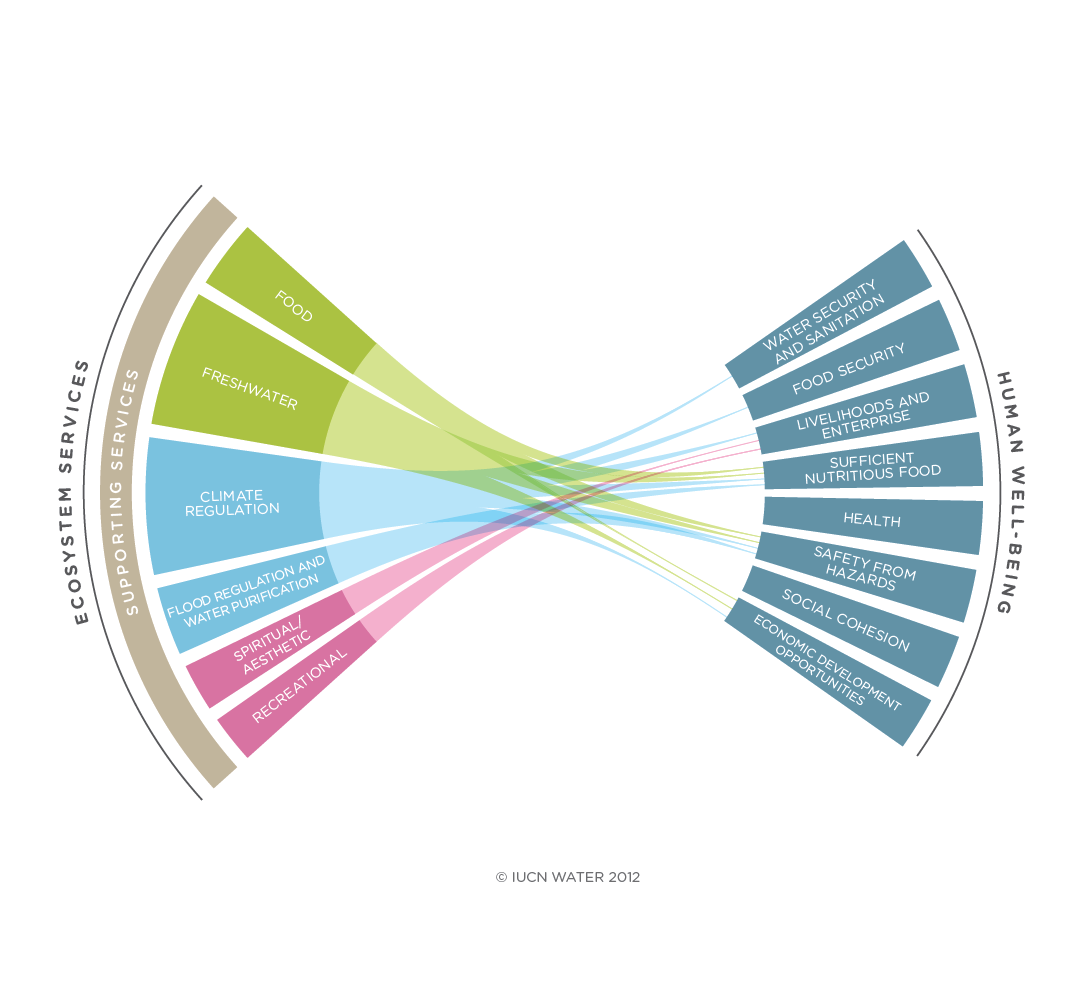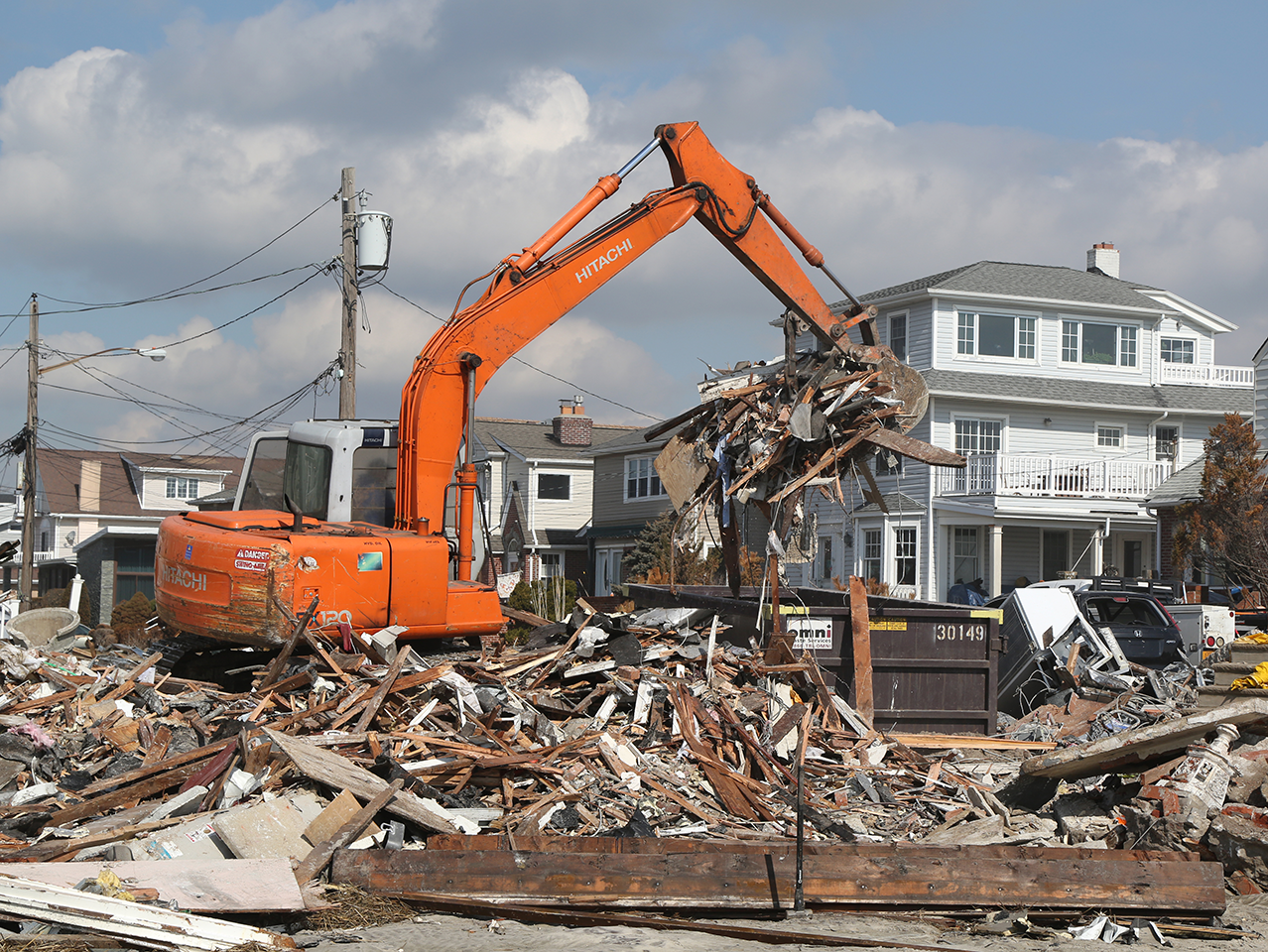Nature’s Dividend—Pricing Global Ecosystem Services
Air Date: Week of June 20, 2014

Coral reefs provide homes to potentially millions of species, and they do a great deal to protect shorelines and sequester carbon—but their ability to do these things has been cut in half since 1997. (Photo: bigstockphoto)
It’s easy for humans to forget that pollinators and trees and the sun work for free — they provide some of the many ecosystem services that benefit human well-being. Paul Sutton, a geography professor at University of Denver, has calculated a dollar price of these services, and explains to Host Steve Curwood how he calculated the value of these services.
Transcript
CURWOOD: Earlier in the program we were discussing the plans of the Obama Administration to protect a broad swath of the Pacific Ocean in part to help build up fish stocks. But some would urge us to take ocean preservation a step further, arguing that all fisheries in international waters should be shut down as the ability of the ecosystems of the high seas to store carbon dioxide is more valuable than all the fish caught there. But calculating the value of services provided free by the Earth’s natural resources is tricky, though Paul Sutton, Professor of Geography at the University of Denver, has done just that in a new paper published in Global Environmental Change. Welcome to Living on Earth.

Bees are responsible for pollinating about 80% of pollinated crops, such as apples, strawberries, avocadoes and grapes. (Photo: bigstockphoto)
SUTTON: Thanks, Steve. It’s a pleasure to be here.
CURWOOD: Paul Sutton, tell me, worldwide, what is the value of all the ecosystem services that the natural environment provides us?
SUTTON: Well, Steve, it’s amazing. The global value of all the ecosystem services provided by world is roughly twice as much as the marketed world economy. The sum of the Gross National Product of all the countries of the world is $70 to $75 trillion dollars, but nature is pollinating crops and protecting us from storms and producing fish and purifying water. And, if you price the value of all the things that nature does for us, it’s twice the size of the global marketed economy; it’s roughly $125 trillion dollars.
CURWOOD: You did the first round of your studies back in 1997. What’s really striking to you about your findings today compared to seventeen years ago?

A balanced ecosystem supports human well-being in many ways. (Photo: IUCN Water Programme 2012)
SUTTON: At the updated prices, we’ve lost $20 trillion dollars per year in terms of ecosystem services provided by nature. So that’s bigger than the economy of United States. That’s a huge amount of economic benefit that we are squandering.
CURWOOD: Where’s most of that value being lost?
SUTTON: Primarily, coral reefs, coastal wetlands and tropical rainforests.

A degraded system offers less benefit to humanity. (Photo: IUCN Water Programme 2012)
CURWOOD: And this is every year?
SUTTON: Every year, and this is a common question I get. This value, $125 trillion dollars per year—this is what bees have done for us this year, what wetlands have avoided in terms of storm damages this year. So it’s essentially the interest on natural capital.
CURWOOD: Well, let’s talk about a couple of the ecosystems that you took a look at. What about coastal wetlands and their ability to protect cities like New Orleans or New York from more severe storms that we’re seeing now with the changing climate. What are these wetlands worth?
SUTTON: Just the storm protection services provided by coastal wetlands was $23 billion dollars a year; so now an updated estimate of the value of wetlands was around $25 trillion in 2011.
CURWOOD: Now how do you come up with these figures? I mean, how do you calculate the value of a wetland?

Coastal wetlands reduce the costly damage of storms such as Hurricane Sandy. (Photo: bigstockphoto)
SUTTON: That's a really good question, and so let's talk about a particular ecosystem service provided by coastal wetlands—and an example would be storm protection. When tropical storms like Sandy hit, the damage they would have done is mitigated by the presence of coastal wetlands. And so what you need to do is take data sets like maps of the paths the hurricanes passed and then you need a map of the coastal wetlands. You also need a map of economic activity, and then you get the insurance company data that documents how much damage you really did experience as a result of Katrina and Andrew and Hugo and all those storms. And then you build a statistical model in which there's only two parameters that influence how much damage. There was wind speed—the higher the wind speed the more economic damage is done by the storm, and how much wetlands was in the swath of the storm. The more wetlands that are there, the less damage was done by the storm and when you apply that to all the storms over the course of the years, it works out to an average of about $23 billion dollars per year in reduced damage or avoided costs from hurricanes.
CURWOOD: Now, in many of these cases, I gather that the ecosystem service depends on the place that it’s in—the coastal wetland on a deserted island is not worth as much as something that’s protecting Charleston, South Carolina, for example.
SUTTON: Yes, so basically human wellbeing results from an interaction of human capital, built capital, natural capital, and social capital, and some of these things interact spatially and some of them interact in other ways. I mean, a storm is not going to do a lot of damage if there's nobody there. However, there are other ecosystem services like carbon sequestration where we're just happy to have any part of the planet pull carbon out of the atmosphere to mitigate climate change.
CURWOOD: Now how do you respond to critics who say it’s wrong to put a dollar value on ecosystem services? Mother Nature is here for us—it's our gift from our creator.

All of humanity benefits from ecosystem services, yet policymakers ignore the economic value in protecting nature. (Photo: epsos.de)
SUTTON: [LAUGHS] I think that's a totally legitimate criticism, and one way that criticism is put is, “All you guys have done is underestimated the value of infinity,” and I agree with that. I basically agree that Mother Nature, the natural endowment that we have been given by our Creator perhaps, is infinitely valuable. Water is infinitely valuable to you and you don't pay all of your income for water. So what we're really trying to do is to get the public to appreciate the relative contribution of the natural world to human wellbeing, and these findings are rough. They're probably an underestimate, but we’ve lost $20 trillion dollars in the last decade and a half. That should make someone concerned. We have people that are very concerned about the economy, and they go back and forth between Goldman Sachs and the Federal Reserve and the Securities and Exchange Commission. And they have the authority to print trillions of dollars, but we do not have anybody with that kind of political power to do anything to protect the environment—and the environment is worth more to us than marketed economy.
CURWOOD: So, Paul, now we have all this data. Now what do we do with it? How can we use this knowledge of the value of the environment in economic terms to take better care of it?

The beauty of nature is not measurable, but the services it offers us are. (Photo: bigstockphoto)
SUTTON: We know a lot of the things we need to do. We need to develop renewable resources and alternative energy. We need to provide family-planning to all people that want it. We need to decelerate the rate at which CO2 is increasing in the atmosphere. So all the answers associated with climate change are part of this problem. What we hope to accomplish with this kind of pricing of the planet is to speak in a language that policymakers understand, to help us recognize that we have a market failure that is larger than the size of the global economy. And hopefully we can think about ecosystem services in a way that they're considered as public goods that require new institutions for their maintenance, nurturing and preservation.
CURWOOD: Paul Sutton is a Professor of Geography at the University of Denver. Thanks so much for taking this time with us today.
SUTTON: It’s been my pleasure, Steve. It's always a pleasure to chat with you folks at PRI.
Links
Read the ecosystem appraisal paper
The 1997 study on valuing ecosystems
Read the IUCN’s assessment of how ecosystem services contribute to human well-being
Living on Earth wants to hear from you!
Living on Earth
62 Calef Highway, Suite 212
Lee, NH 03861
Telephone: 617-287-4121
E-mail: comments@loe.org
Newsletter [Click here]
Donate to Living on Earth!
Living on Earth is an independent media program and relies entirely on contributions from listeners and institutions supporting public service. Please donate now to preserve an independent environmental voice.
NewsletterLiving on Earth offers a weekly delivery of the show's rundown to your mailbox. Sign up for our newsletter today!
 Sailors For The Sea: Be the change you want to sea.
Sailors For The Sea: Be the change you want to sea.
 The Grantham Foundation for the Protection of the Environment: Committed to protecting and improving the health of the global environment.
The Grantham Foundation for the Protection of the Environment: Committed to protecting and improving the health of the global environment.
 Contribute to Living on Earth and receive, as our gift to you, an archival print of one of Mark Seth Lender's extraordinary wildlife photographs. Follow the link to see Mark's current collection of photographs.
Contribute to Living on Earth and receive, as our gift to you, an archival print of one of Mark Seth Lender's extraordinary wildlife photographs. Follow the link to see Mark's current collection of photographs.
 Buy a signed copy of Mark Seth Lender's book Smeagull the Seagull & support Living on Earth
Buy a signed copy of Mark Seth Lender's book Smeagull the Seagull & support Living on Earth

